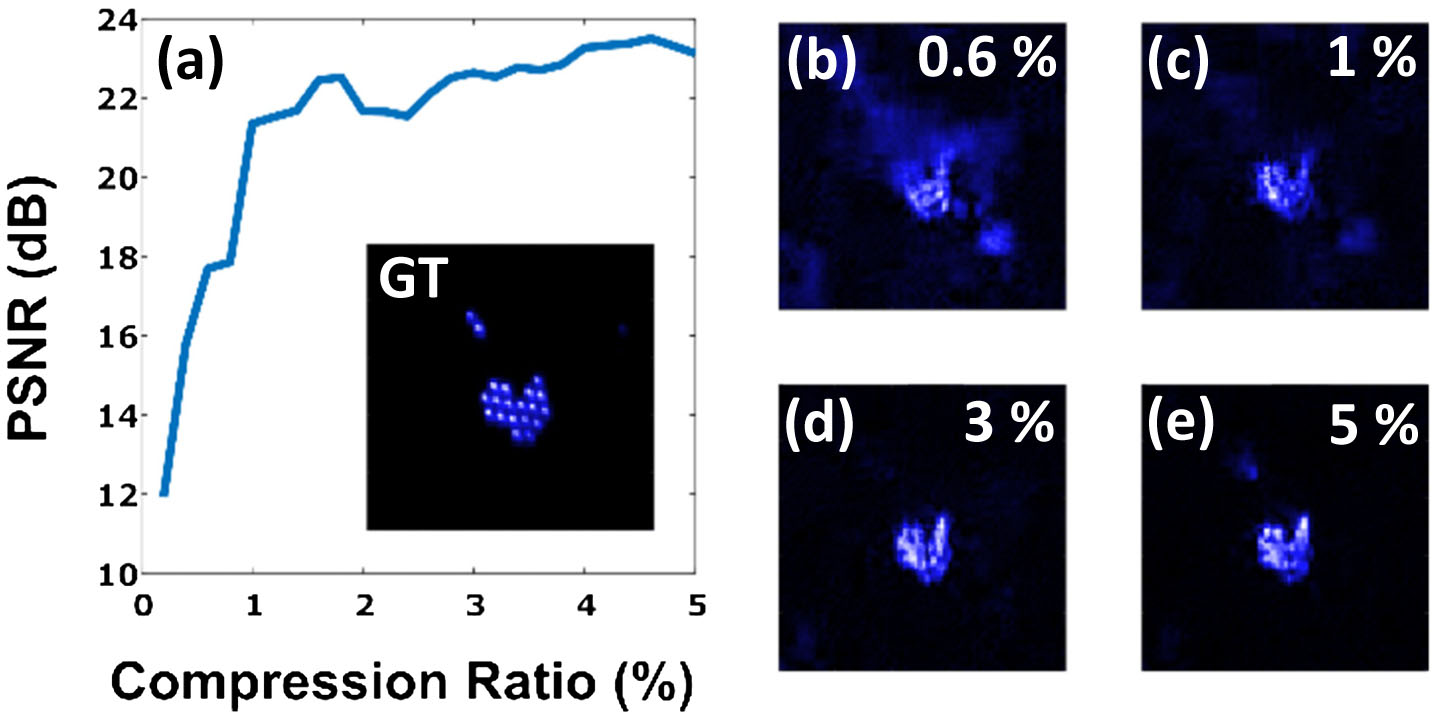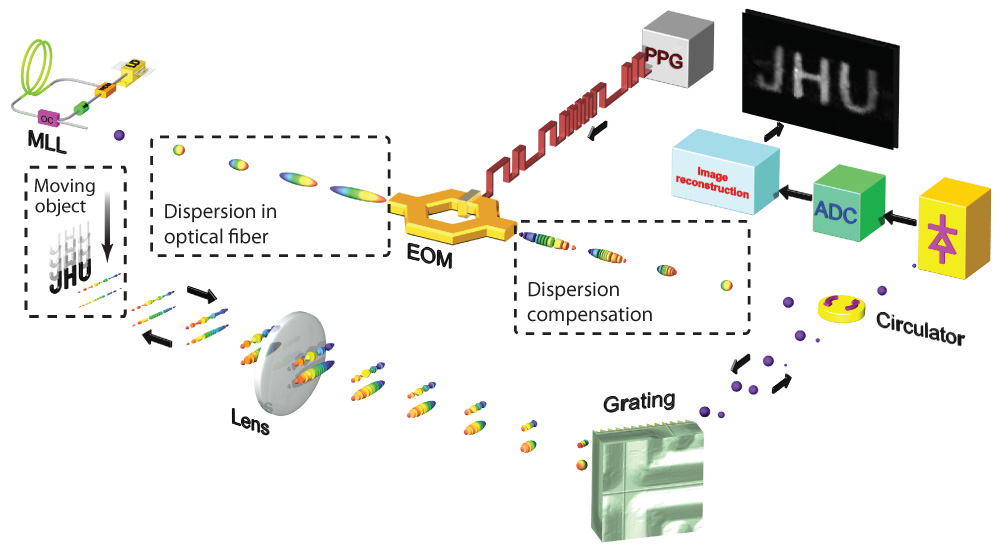We work on a variety of photonic systems for imaging and other forms of sensing. Below are some highlights of our recent work.
High-Speed Multi-Photon Microscopy
Multi-photon microscopy is an imaging modality that allows for depth sectioning and thus 3D imaging deep within scattering tissue. For example, multi-photon microscopy is of great current interest for imaging neural dynamics in brain tissue. We are developing a fast and wide field-of-view multi-photon microscope for neural imaging applications through a combination of temporally focused wide-field illumination and compressive image acquisition. To find out more check out our recent publication:

High-Speed Temporal Sampling for Sensing Systems
Rapidly characterizing wide bandwidth (greater than 10’s GHz) signals is very challenging for current electronic devices but highly desired for diverse applications such as wireless spectrum sensing, RADAR, LIDAR, optical coherence tomography (OCT), and photon doppler velocimetry (PDV). We develop photonically-enabled system to allow for a significant reduction in the hardware resources needed for extremely wideband sampling in such sensing systems while maintaining rapid and continuous awareness. Our approaches employ high-speed fiber-optic signal processing and often leverage compressive measurement schemes. To find out more check out some of our recent publications:

